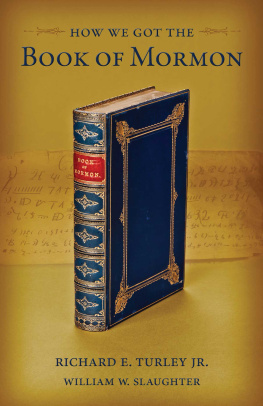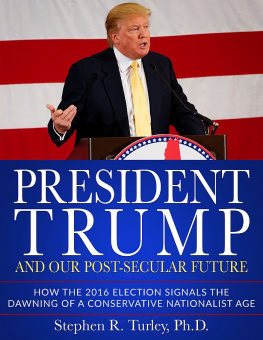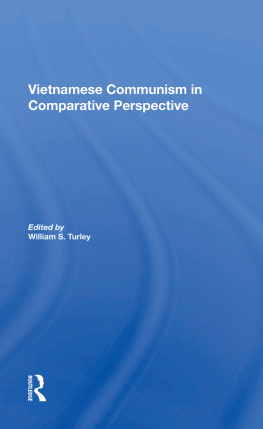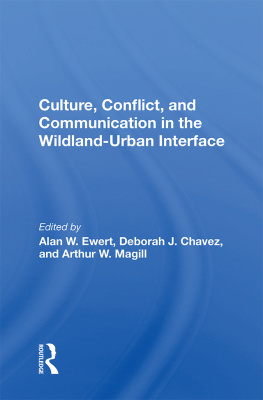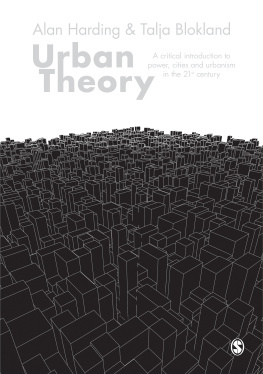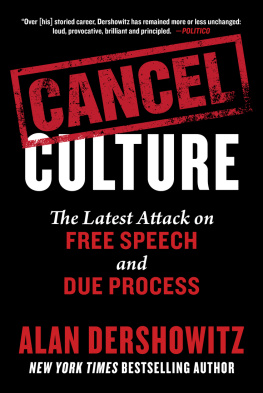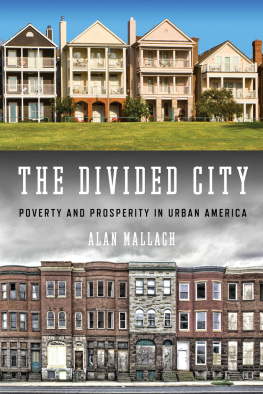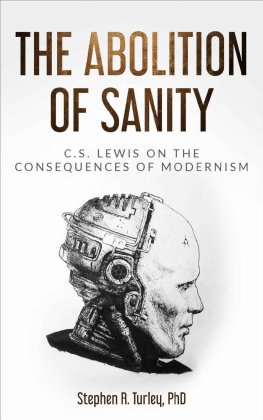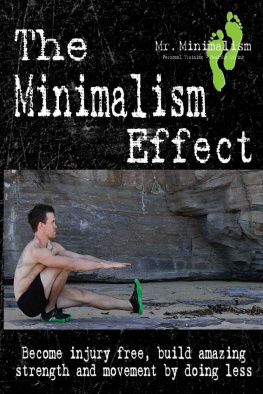URBAN CULTURE
URBAN CULTURE
Exploring Cities
and Cultures
ALAN C. TURLEY
University of New Orleans
First published 2005 by Pearson Education, Inc.
Published 2016 b y Routledge
2 Park Square, Milton Park, Abingdon, Oxon OX14 4RN
711 Third Avenue, New York, NY 10017, USA
Routledge is an imprint of the Taylor & Francis Group, an informa business
Copyright 2005 Taylor & Francis. All rights reserved.
All rights reserved. No part of this book may be reprinted or reproduced or utilised in any form or by any electronic, mechanical, or other means, now known or hereafter invented, including photocopying and recording, or in any information storage or retrieval system, without permission in writing from the publishers.
Notice:
Product or corporate names may be trademarks or registered trademarks, and are used only for identification and explanation without intent to infringe.
Credits and acknowledgments borrowed from other sources and reproduced, with permission, in this textbook appear on appropriate page within text or, in the case of photographs, on .
ISBN : 9780130416940 (pbk)
Cover Design: Bruce Kenselaar
Library of Congress Cataloging-in-Publication Data
TURLEY, ALAN C.
Urban culture: exploring cities and cultures/Alan C. Turley.
p. cm.
Includes bibliographical references and index.
ISBN 0-13-041694-0 (alk. paper)
1. Sociology, Urban. 2. Cities and towns. 3. Culture. I. Title.
HT151.T87 2005
To Marian, for her help,
and to Judy, for her support.
Contents
This book illustrates the effects of the urban environment on the production of culture. It covers music, art, writing, and deviant culture production from the perspective that the urban landscape and urban structure impact the groups of people living in the city. City life has an effect on production and consumption of culture and literally defines where culture can take place. Using urban theory to talk about culture reflects a new approach to a field that hasn't witnessed many new teaching innovations. A book that covers cultural topics together with urban theory and methods will reach modern students in a way in which they haven't before been challenged. Students grasp modern culture better than they grasp any other type of knowledge, so by combining elements of what they know of their world with the theory and methods of urban sociology and anthropology, this book presents pedagogy in a way that is more accessible to students. Applying urban sociology's main theories to new challengeslike examining cultureshould make this book more accessible to students of all ages.
This book is a text for courses in urban sociology or urban anthropology; it can also be used as the primary text in an urban culture class. Though some of the culture discussed is from ancient times, the text attempts to engage students to apply the urban theories to which they are exposed to the cultural topic being discussed. Hopefully, this will provoke readers to apply these theories on their own, and this is the goal of any urban courseenabling students to use the theories, not just read, memorize, and forget.
The first chapters explain the major theories in urban sociology by using culture production in the urban environment as the recurrent theme. Then we will examine music, writing and theater, architecture and fashion, and photography and film as examples of ways to see urban theory in action as well as to get students to use urban theory in new and novel ways. No special artistic knowledge is needed for these chapters; again, the goal is to get students to use urban theories and apply them to culture (something with which they are more comfortable and familiar than with demographical tables or maps). If I have committed some oversight and the artistic explanations are not detailed enough, please contact me at the following address: Department of Sociology, University of New Orleans, 2000 Lakeshore, New Orleans, LA 70148.
I wish to thank the following reviewers for their helpful comments and suggestions: Brian Aldrich, Winona State University; Henry Lee Allan, Wheaton College; Walter F. Carroll, Bridgewater State College; Joe Feagin, University of Florida; W. Richard Goe, Kansas State University; Earl Smith, Wake Forest University; and Renee T. White, Central Connecticut University.
URBAN CULTURE

Urban culture has two levels of meaning for us in this text. One level of urban culture is how the city has impacted its citizens, businesses, social organizations, spatial organization, and artistic production, just to give a few examples. Culture is anything that humans make or use in their environment, everything from hammers and nails to a house that these materials construct are all culture. These are examples of what we call material culture, but there is another kind of culture that a city can impact that we call nonmaterial culture. All of the ideas, laws, beliefs, songs, poetry, religious thoughts, art norms, and folkways in a society are nonmaterial culture. A lawbook is an example of material culture in that it was constructed out of blank paper, ink was printed on the pages, and it was physically bound together to make a book. It is also an example of nonmaterial culture, because the laws and ideas in the book are not the ink on the page, but exist in the collective consciousness of the society. Finally, a lawbook could be an example of urban culture if perhaps it was a collection of municipal laws and codes for that city. Obviously, the city impacted these laws and codes, because they pertain only to that city, and they are part of the urban culture, because the city influenced their production.
The second level of urban culture is how the citizens, businesses, social organizations, spatial organization, and art affect the city. For an example, we will turn to Green Bay, Wisconsin, and the effect one particular kind of sports culture has on the city. Few football fans are as loyal or devoted to their NFL franchise as the urbanites in Green Bay are to the Green Bay Packers. The fans, called cheeseheads have supported this football franchise to Super Bowl wins and through losing seasons, and they have put Green Bay on the urban map of America, despite its small size of about 120,000. The citizens devotion to the football team, even though it is the smallest city with an NFL team and insists on playing in an outdoor stadium through the brutal winter months, have spawned businesses devoted to the team and to creating fans that have required urban road and airport modifications to accommodate home games, making the citys stadium a holy relic of urban football culture. These citizens and the culture that they have produced have definitely had an impact on the city.
Our first assumption in this book is that the city matters, that there is something unique about living in the city: (1) the city affects the individual and (2) groups of these individuals in turn change the city. Just as the natural environment influences what grows and survives in the wild, the city influences the patterns of growth and association of its citizens; but the difference is that citizens can change their environment and the city. How these forces work to make the city and the citys culture unique is the focus of this text. To understand the city we should start with the various theoretical perspectives sociology has developed to analyze the city. There are four main urban theoretical perspectives that can illustrate the effects the city has on the development of culture:





